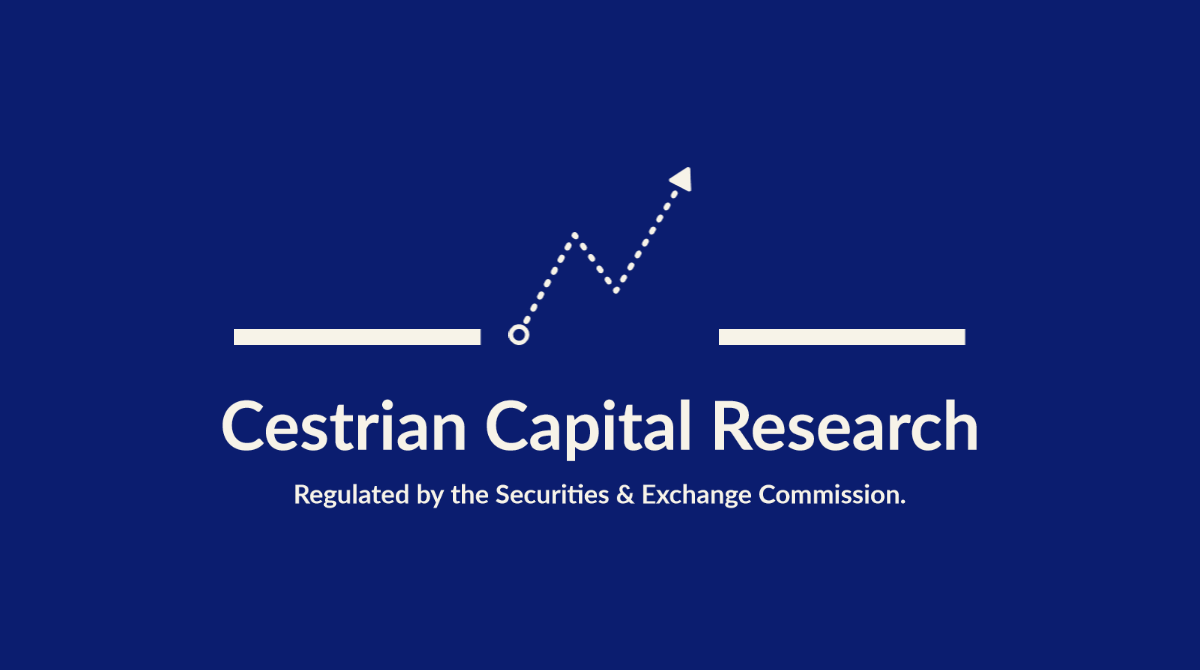O Lordy!

DISCLAIMER: This note is intended for US recipients only and, in particular, is not directed at, nor intended to be relied upon by any UK recipients. Any information or analysis in this note is not an offer to sell or the solicitation of an offer to buy any securities. Nothing in this note is intended to be investment advice and nor should it be relied upon to make investment decisions. Cestrian Capital Research, Inc., its employees, agents or affiliates, including the author of this note, or related persons, may have a position in any stocks, security, or financial instrument referenced in this note. Any opinions, analyses, or probabilities expressed in this note are those of the author as of the note's date of publication and are subject to change without notice. Companies referenced in this note or their employees or affiliates may be customers of Cestrian Capital Research, Inc. Cestrian Capital Research, Inc. values both its independence and transparency and does not believe that this presents a material potential conflict of interest or impacts the content of its research or publications.
Market On Open, Thursday 6 June
by Alex King
Sometimes in financial markets along comes a day when the Market Gods just print the good free money and dump it in your lap, in exchange for no work. And yesterday was one of those days. In truth, when these days come along, they are a result of all the work one has put in previously in an attempt to be correctly positioned when such a move comes along. Sometimes one gets the positioning correct, and sometimes not. When not, time to hedge; when correct, time to let the positions run.
And then comes the next day. Which is a new day. Will the trend continue or was it a fakeout, should one hedge in advance of a reversal or wait for it to happen, etc etc.
Today? It’s a new day. The rate-cut cycle seems to have started with the Bank of Canada yesterday; the ECB is expected to cut rates today. That leaves the Fed late to the party but also trying to think of ways in which inflation is coming down at a rate acceptable to them. Tough spot. As regards markets, what one cannot know ahead of time is, have risk assets front-run the rate-cuts ie. when the cuts come, is that when bigs will take gains using the exit liquidity handed to them by the unsuspecting folks finally tempted back into the market?
Personally, I have found that trying to guess the answer to questions like this is more or less pointless. One cannot know, unless one is already sat in the halls of Big Money. But that does not mean one has to guess. I really liked an aside in a recent Puppy Trades video (this guy - if you watch his stuff try to see beyond the bluster, there is some good work in there), where Mr Trades said, well, the stock market isn’t like gambling against the house, or playing cards with your friends, because in each case, he noted, “I can’t see your cards”. Whereas, he implies, one can see at least some of the cards held by the house in securities markets. And he’s right. You can work out some of the cards the house holds by looking at the breadcrumb trail they leave in how they play the game. And that breadcrumb trail can be found, updated every second of every day, in charts. And this is the reason to do technical analysis. Simple as that. If you know what to look for, ie. you have found a pattern-recognition system that works for you, then you can make an educated guess about where next for certain securities.
Technical analysis works best, in my view, in highly liquid securities that are owned and traded by institutions. It’s not so hot with small caps or thinly traded odd-squad names. And it is particularly effective in my opinion when used in service of hedged trading and investing. Because when, inevitably, you make the wrong decision about the future direction of travel, you can use those same charts to hedge your exposure and try to make money from what turned out to be the right direction (which you had thought to be the wrong direction). Hedged trading is a world away from buy-and-hold, a different mentality entirely, but when executed correctly, it is a superior method, because it is built on the notion that one is probably going to be wrong a lot, and when wrong, one can act on it to protect capital and, when the hedging-reflex is finely trained, to make money from the ‘wrong direction’ before returning to the ‘right direction’. Whereas buy & hold? You have to be right. A lot. And most people aren’t.
Now, you can use the charts in these daily notes for many purposes; buy and hold, swing trading, option buying and/or selling, or hedged trading. If you’d like to see in detail how the charts can be used for hedged trading, and receive Trade Disclosure Alerts whenever Cestrian staff personal accounts place trades in covered stocks and/or ETFs? Join our Inner Circle service, here. (If you’re a current Market Insight subscriber and you’d like to move up to Inner Circle, we’ll ease the way with a discounted price - just drop us a line here).
Anyway, let’s get to work.
As always in these notes, today we cover all four primary US equity indices (the S&P500, Nasdaq-100, Dow Jones-30 and Russell 2000); bonds (TLT), volatility (the Vix), oil (USO) and sector-specific ETFs.
